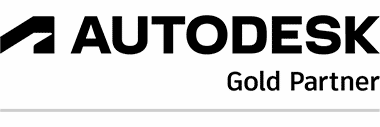
Adoption of AI in the industry
Over the last ten years, Autodesk have integrated features into their product lineup to enhance customers’ creativity, automate repetitive tasks, and offer predictive insights through powerful analytics. “In 2024 and beyond, these capabilities will enable design and planning to become more effective, efficient, and better informed,” says Amy Bunszel. “For example, Autodesk Forma’s Rapid Operational Energy Analysis allows designers to understand how factors such as a building’s geometry and wall construction types will affect its predicted energy use–all during early stage design. Autodesk AI technology will help deliver better and more sustainable results for all.”
The expansion of Building Information Modeling (BIM) within construction is intricately connected to the upcoming fusion with AI. Despite its solid presence in design and engineering, BIM’s growing acceptance in construction is pivotal for optimizing AI in the industry. By serving as visual databases, BIM models gather abundant data from various construction phases, fortifying customer datasets and enabling more profound insights through AI.

Predictions for Emerging Tech in 2024
The utilization of emerging technologies like digital twins and virtual reality is gaining momentum in the construction sector. Digital twins are proving increasingly beneficial for owners and facility managers, offering support in areas such as remote asset management, predictive maintenance, and long-term asset planning. In response to the growing need for remote collaboration, Autodesk has introduced Workshop XR, a virtual reality workspace facilitating design reviews and issue identification before construction commences. This shift toward virtual reality explores enjoyable and efficient approaches to work, potentially shaping the future of work.
Construction firms are also exploring operational opportunities post-build, with digital twins providing rich data for informed decision-making by creating a comprehensive record from initial design to the completed structure. Additionally, augmented and virtual reality enhance the early evaluation of architectural outcomes during design reviews.
Read the full article from Autodesk: “2024 trends in the built environment: What to anticipate across AI, sustainability, and labor”, Amy Bunszel & Jim Lynch



